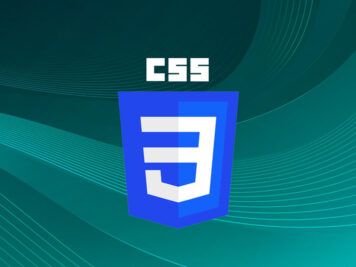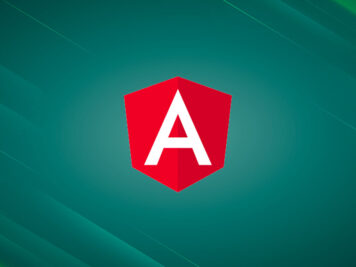“It’s better to build something that a small number of users love, than a large number of users like.” Sam Altman, Y Combinator
Start-ups depend a lot on signing marquee customers for success as with them, reaching the next level and gunning for sustainability become easier. That’s why they focus on coming up with an MVP first. But launching a start-up is never easy. The road to launch often gets bottlenecked by capital constraints, invalidated ideas, an unprepared user base, and others, leading to a mad rush. When that happens, entrepreneurs push back UX to the backseat ignoring how good UX design for startups could play a pivotal role in improving user experience, increasing engagement, and impacting customer sign-ups and retention.
Knowing what customers want and designing product experiences around their needs are two must-dos for any start-up. If you review the success of start-ups like PhonePe, Cred, Browserstack, Groww, and Urban Company, you will get the same view. As a UX designer, you could be of great value if you help start-ups organize their purposes and goals with user needs and ensure your design addresses the right pain points.
I have over ten years of experience as a UX designer building MVPs. From my time with start-up owners, I have gathered that striking a balance between what the user and business demand and the design we propose is essential. So, based on my experience of working with start-ups, I have curated a list of rules that UX designers can refer to for best results.
You may also be interested in: MVP Software Development: Complete Guide for Startups
5 Rules for better UX Design for Startups
Here are the 5 rules that designers must follow while working with start-ups, check them out.
- Identify the core problem your product is solving.
The core holds the product together. How you get your finger on that decides the fate of the product you are designing.
A few years back, I worked with a fintech start-up where the stakeholder had more than 15 years of domain experience, which helped him identify massive sector gaps. As the next step, he wanted to develop a product that would be a one-stop solution for all these problems, and he needed features accordingly.
As the discussions progressed, I realized the product had no core, and the owners were trying to plug too many holes, injuring our efforts to find a suitable design.
There is no harm in accepting that your product has a limited scope, as you have to organize thoughts accordingly before things go haywire.
What I think you should do:
- There are two primary ways to get things sorted; Co-creation workshops and mind map exercises.
- Co-creation workshops are fun. In these workshops, bolt in all the stakeholders inside a room, focus on a vision goal, frame the problem, make the hypothesis, map the personas, and decide what features are needed. Such discussions clarify business needs and the core problem to be solved.
- MindMap, on the other hand, is our go-to tool even during the co-creation workshops. It provides a holistic picture of the business to stakeholders and helps plan their eventual product releases.
- Understanding the core problem will help you define a clear scope and channel your efforts optimally.
- Keep the end-user in mind.
We do workshops often to understand what our customers want and the business side of the products. We call them ‘Disrupt.’ In one such workshop, I came across a founder who had a clear picture of how the business would make money. But when we talked about his target audience, I realized he was unclear about whom he should target first.
While analyzing a possible user persona, I always go back to this particular incident to have my mind clear about what things I must follow. It acts as a reference point and helps me unearth multiple user groups we can target during the user persona exercise. For various user groups, we rely on the stakeholder’s knowledge of the users. Then we do a quick user profiling to identify the ‘central/base’ end users for whom we are building the MVP.
If we can solve problems for this end-user group and provide them with the right experience, they will help us spread the word. Eventually, this will create a wider customer base for the product owners by incorporating more and more peripheral users.
What I think you should do:
- Identifying the ‘central/base’ user group’s pain points is a must and should be aligned with the previously set goals.
- Understanding end users’ pain points, needs, and expectations are critical for a product’s success. If you get a chance to meet end-users, prepare a questionnaire to get all the ‘WHYs’ answered.
- Use tools like day-in-a-life, user-personas, and customer journey map to understand your end-user base and build their profiles.
- Be as clear as possible.
Let’s accept that budget and time-to-market will always be the significant constraints, and you will hardly ever meet a flexible founder when it comes to both these factors. But we have to be considerate as they are just starting up and to save them from spending too much, ensure you have a clear idea about the product and its impact zones.
In one of my meetings with a particular sports training product owner, I realized he lacked clarity about what his end users wanted, which made user profiling difficult and led to iterations. Rolling out a product without meeting user needs increases the chances of customer dissatisfaction and product failure. But if you are clear about what the end-user wants or which user base the product should penetrate, then designing and streamlining UX would become simpler.
As I mentioned earlier, workshops, persona mapping, interviews, etc., are crucial for determining pain points, and user needs. To validate and translate them into working prototypes, we do a lot of sketching, mind-mapping, paper prototyping, testing with the team members, etc. The process is to shortlist the primary use case needs and then design and engineer solutions.
What you should do:
- Time is a critical factor when it comes to designing MVPs. Start with whiteboarding/sketching to communicate your ideas.
- Do as many sketches as possible and test them with the users (it could be actual or even your friends).
- Use paper prototypes or, if possible, run the users through your sketches.
- Involve the stakeholders earlier in the process to validate user flows and patterns. This way, it becomes easier for you to test and refine your ideas, and you get more time for the final digital designs.
- Getting access to end-user data is sometimes difficult. In such scenarios, assume factors and bank on your experience to deliver.
- Templatized vs. feature focus/design quality where it matters.
Start-ups try to ship MVPs to the market as fast as possible as it reduces loss percentage. This idea has its origin in the concept ‘Fail Fast, Fail Cheap’. But this belief makes things a little complicated for UX designers as it puts them at the sword’s edge because now, they have to decide whether to go for templatized solutions or build the entire thing from scratch.
I have a solution that includes both these ways. While designing for the core problem, we should build from scratch since this will be a game-changer. The attention to detail, interactions patterns, and visual style must be exemplary. Things like settings, notifications, listings, etc., can be easily managed by reusing components and libraries.
What you should do:
- Ensure that the quality of designs is maintained throughout the application/product in terms of grids, alignments, spacings, hierarchy, styles, etc.
- Focus on the core feature to make it stand out from the competition.
- Keep less important things simple.
- Plan with a budget in mind
I have talked about budget constraints earlier. Without marquee customers and a steady influx of ROI, it is difficult for a start-up to go easy on the budget. If they do, it could be suicidal.
But then, as a designer, you will always try to deliver the best without cutting any corner. You will always face this tug-of-war between your designer ego and the budget constraint. I chose quality over budget during my initial years only to find my requests shot down by start-up owners. Then, I learned more about their pain points with the increasing number of customer interactions. So, I found a way to bypass budget constraints without compromising quality: you could avoid steps like starting from the ground up to do the wireframes and the visual designs. There are a lot of libraries and design systems out there for you to use, and make sure you utilize them.
But, only use these elements and libraries to form a base and create features that may not need innovation or be functional and aesthetically good-looking. As I mentioned earlier, keep it simple and innovate only where necessary, which is the main user need. The below point can help you create better UX design for Startups.
What you should do:
- Reduce cost burdens by avoiding steps that start ground up to do the wireframes and the visual designs.
- Use libraries and other design systems to form a base and create features.
- Start with reusable components and basic interaction guidelines to set the product structure and flow.
- Ensure a simple and functional design.
- Innovate only where it is necessary.
- Interaction pattern tweaks, animations, micro-interactions, and other curated items can come at a later stage to improve the experience based on user feedback.
The above rules if followed can help immensely in creating better UX design for Startups.
Also Read: Software Development For Startups: A Founder’s Guide
In Short:
As designers, we need to make our one chance count, and we need to design an MVP that is easy to use and is engaging. Hence, the products we design should be ‘viable’ and ‘lovable’.
- Do co-creation/collaborative workshops and mind map to get to the core of the problem.
- Find out who the end-user is and gather data as much as possible.
- Make sure you understand the product well and then design a simple look with input from the stakeholders.
- Plan with constraints in mind. Work with reusable components and libraries. Improve the experience later by making changes based on user feedback.
At Talentica, we have more than 20 years of building UX design for startups. Check our UI/UX design and development services for more information.







